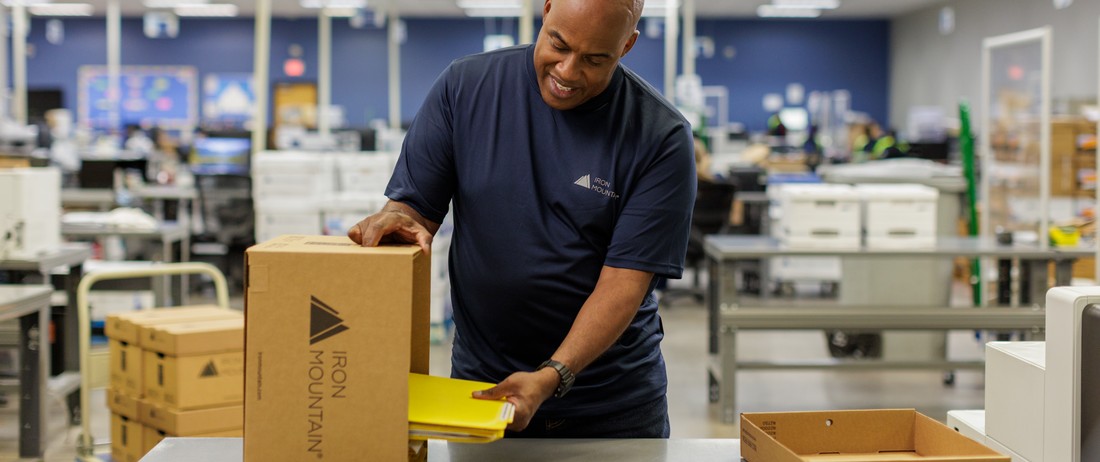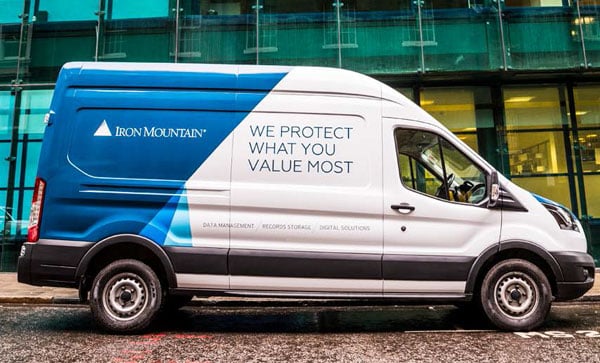Legacy records cleanup: a powerful alternative to DIY
Whether you’re managing your day-to-day program or going through an event such as a merger, acquisition, or divestiture, you can’t make strategic business decisions or meet your objectives if your legacy files are not properly organized.

To help bring order and organization to their files, many Records and Information Management (RIM) professionals attempt to do the work on their own. But when you factor in the associated risks, costs, and lack of resources to optimize the process, it only increases the chances of either prolonging the project, not doing it in the most effective way, or even stalling out completely.
As I mentioned in my last post, a DIY (do it yourself) approach to records management, and in particular the cleanup of inventory, has its challenges. It’s overwhelming. It’s resource-intensive. And it takes employees away from their core work.
When it comes to cleaning up legacy paper files, here are the three main challenges we’ve seen organizations struggle with:
-
Poor visibility results in too much time spent searching for files and an inability to efficiently make defensible decisions about which files to retain, digitize, or destroy.
-
Commingled record types with mixed destruction dates makes it difficult to confidently and defensibly take action on disposition.
-
Lack of cost-effective solution to sort and reorganize files by destruction eligibility date, record type, a unique identifier, or other requirement.
The Challenge with Legacy Records: What we heard from our customers
As leaders in information management, what we often hear from our customers is, “Where do we start?”
Considering this legacy cleanup problem has existed for decades, it’s surprising no one has yet provided an efficient and cost-effective solution. Our traditional response was to either index all of the files so you knew what you had, or help you perform the work provided you understood record types and could properly apply decision-making. In most cases, the high cost to perform either of these options could not be justified. Additionally, both options proved extremely challenging to perform efficiently and at scale. The more we heard this, the more we realized there had to be a better way.
So we started thinking about what we could do. How could we help make this process as pain-free as possible? We knew that with our experienced teams and proprietary tools, we could finally help to tackle this problem.
The Idea: Using technology to automate defensible decisions
We worked with our developers and came up with a plan to solve this records management challenge once and for all. And this is how the idea behind Smart Sort was born.
We knew our solution had to be defensible, so the key was to leverage technology that would automate the file-level disposition process. Fortunately, we already had this technology—we simply had to use it in a different way. It was also critical that this new process scale globally, so we designed the workflow to specifically occur within our existing operations platform.
With a single scan (or hand key) of a file ID, we can make instant disposition decisions that are informed by our customers’ specific retention policies. Additionally, we automated the individual indexing of each file and the descriptions of what’s inside each box. So we no longer have multiple touch points, and we’ve eliminated the need to have specialized individuals perform each step of the process.
The Reaction: “Hallelujah!”
Our customers’ response to Smart Sort has been overwhelming. When my team and I presented our new solution to a group of RIM professionals, they literally broke out singing “Hallelujah!” And another customer said, “I thought I would have to wait until my granddaughter was working before this problem was solved.”
With Smart Sort, we help our customers:
-
Find records quickly and accurately
-
Reduce records management program costs
-
Simplify defensible decision-making
-
Support information governance and business objectives
-
Achieve greater compliance
Our customers’ heartfelt reactions are testament to our continued partnership and ability to provide a cost-effective solution to their critical business challenges. With Smart Sort, we’re now able to relieve some of the pressure our customers experience and eliminate the need to DIY.
Legacy records cleanup is a critical step in your digital transformation journey
Without an organized records inventory, your team is missing a key opportunity to capitalize on valuable information. Through the Smart Sort process, you can easily identify records that should be made accessible to employees or have value for monetization, analytics, or other business initiatives.
Whether you’re just starting out or accelerating your organization’s digital transformation journey, it may be time to reassess and organize your paper records inventory.
If you’re looking to take control of your legacy records, DDIY—don’t do it yourself. We’re here to help. Our Smart Sort solution is a powerful alternative to DIY.
Related resources
View More Resources

